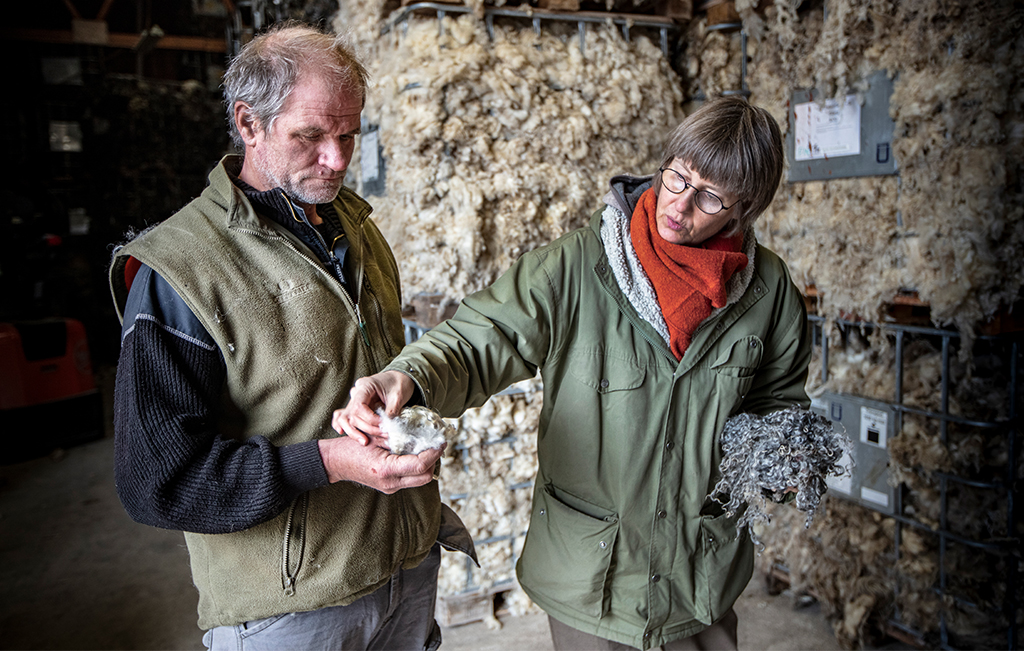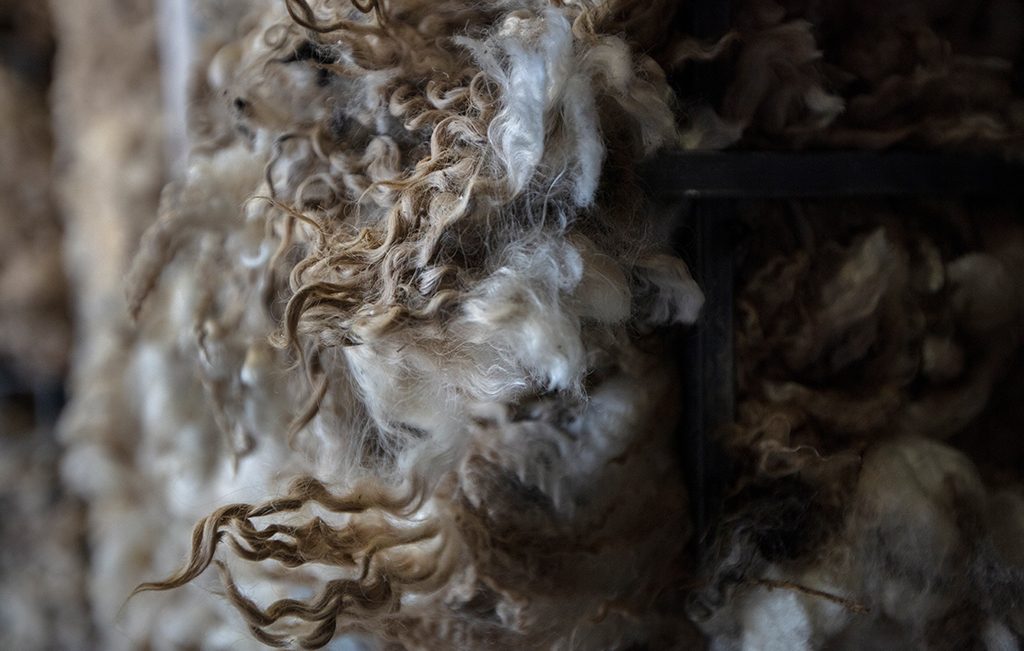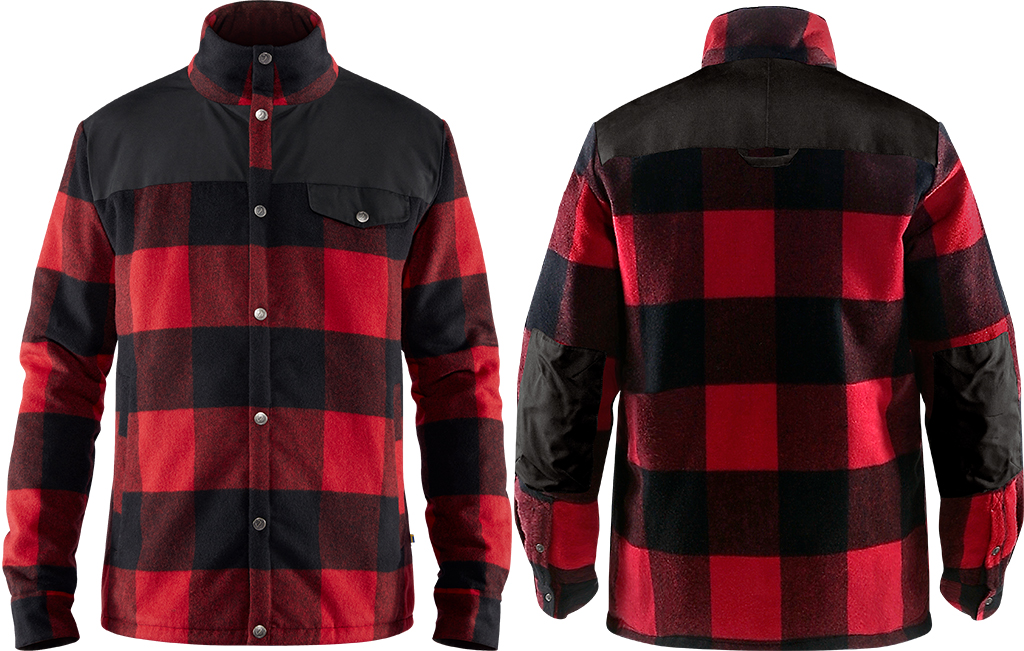For seven years, Hans Bulthuis and Jenny Andersson hoarded wool. They packed the shiny grey ringlets in every corner and crevice of their barn, located on Gotland off Sweden’s east coast. The island’s wool was considered waste, and the couple simply suspected the fibers deserved a better fate than the incinerator.
In 2017, someone appeared with an idea. It was a fiber expert sent by Fjallraven, the Swedish apparel company that, as luck would have it, had recently embarked on an initiative to use more wool—particularly locally grown fibers. As Fjallraven conferred with Swedish wool producers, it learned about Gotland and the quixotic couple that was collecting local pelts. So when Fjallraven’s fiber processor arrived at Bulthuis and Andersson’s farm, he discovered massive stacks of wool totaling some 16 tons—and the brand’s designers started brainstorming how to make use of it all.

Hans Bulthuis and Jenny Andersson
Fjallraven’s interest in wool sparked back in 2016, when one of the company’s product developers read a magazine article describing how most of Sweden’s wool gets destroyed. “We [Swedes] raise quite a lot of sheep,” says Fjallraven Head of Sustainability Christiane Dolva. “But they’re bred for their meat, not their wool, which is a byproduct that just gets thrown away.” Fjallraven sought to change that.
Turns out, Bulthuis and Andersson weren’t the only ones collecting discarded wool and storing it away for future use—Fjallraven soon learned of a handful of producers that could supply it—but their stash proved large enough for Fjallraven’s processor to work up some yarn and fabric samples with it. “Wool is a brilliant material, especially in the outdoor world, because it cools you when you’re warm and warms you when you’re cold,” explains Dolva. Because it’s inherently biodegradable, wool is also more sustainable than petroleum-based synthetics. But Fjallraven’s designers soon realized Sweden’s Gotland wool wasn’t likely to make great base layers or sweaters.
Unlike silky Merino fibers, Gotland wool feels coarse and scratchy—yet it’s marvelously heat-trapping. After all, these pelts help sheep live outdoors through winter temperatures that rarely creep above freezing. Gotland fibers are also more breathable than plastic-based insulation.

Gotland wool
Initially, Fjallraven tried using Gotland wool in a backpanel for a daypack: Released in fall 2018, the Lappland Hike 15 swapped out the standard mesh-covered foam for a wool-based alternative. “We had long been looking for something to replace that synthetic makeup,” Dolva explains. When the company couldn’t locate backpack foams made from recycled content or similarly sustainable formulations, it tried out compressed Gotland wool. “We’ve found it to be equal in durability and airflow to the synthetic version,” Dolva says.
Next, the company tried out wool-based wadding for insulated outerwear. Other brands, including Smartwool and Icebreaker, already use lofted wool in some of their jackets, and United By Blue turns bison’s coarsest fibers into lofty BisonShield insulation for its puffy jackets. Fjallraven developed a similar approach for fall 2019, placing Gotland wool insulation throughout the Canada Wool Padded Jacket’s chest and sleeves, which are lined with silky polyester, so the scratchy wool doesn’t contact the wearer’s skin. The flannel face fabric also combines recycled wool and polyester. (Despite the name, this jacket features wool from Sweden, not North America.)

Fjallraven Canada Wool Padded Jacket
“It’s heavier and bulkier than down, which still has the best warmth-to-weight ratio,” Dolva says. But then again, Fjallraven doesn’t chase ultralight construction, preferring to build for durability instead. Thus the Gotland wool insulation fits in well with the company’s ethos: It’s super warm, feels substantial and performs brilliantly in damp conditions.
Fjallraven plans to expand its Gotland wool program to include more outerwear for fall 2020, including the women’s Vidda Pro Wool Padded Jacket, a Gotland version of its hard-wearing predecessor (which REI will carry). “Now that we’ve become wool nerds, the innovation team is excited about the possibilities,” Dolva says.
And more brands are jumping on board. “Several Swedish textile brands are now talking about using [Gotland wool] too,” Dolva says. The supply may grow to include wool produced in places beyond Sweden, as well. “As we launched these products, we heard that other countries in Europe are also discarding their wool, which suggests there’s potential to develop a market,” she says. Increased demand for wool could encourage producers in Gotland and across Europe to save and sell their fleece rather than burn or bury it.
Because Bulthuis and Andersson were quite right: The world can’t afford to trash quality wool.
All photos courtesy of Fjallraven. For more stories of brands doing good work, visit our Good Gear landing page.


